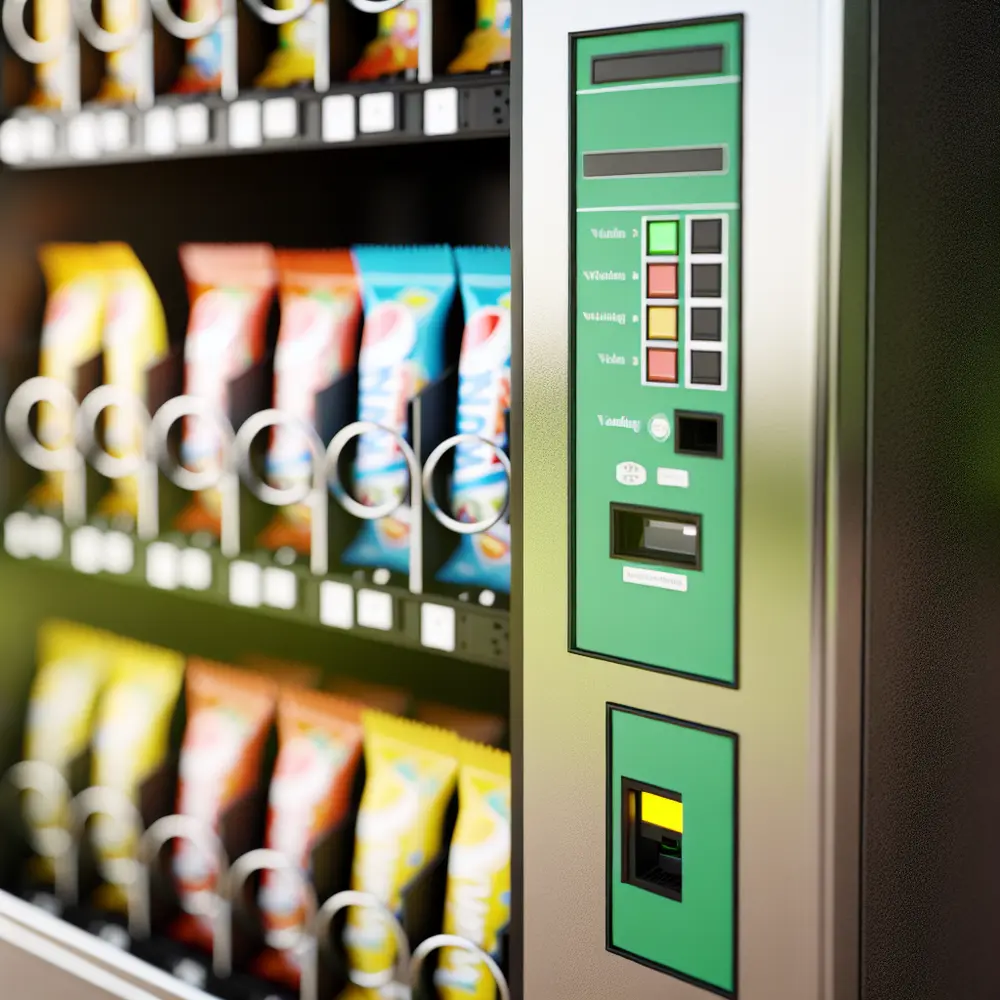Vending machines have come a long way from their humble beginnings as simple boxes dispensing snacks and drinks. Today, they represent a sophisticated blend of technology and customer convenience that can transform the way businesses operate. As consumer demands evolve, these machines have incorporated advanced features that not only cater to varied preferences but also adapt to different environments, making them an ideal investment for small and medium businesses. Whether you’re looking to enhance customer experience in your establishment or are considering launching your own vending machine venture, understanding the principles behind these machines is essential.
In this article, we will explore how vending machines work, the various types available, tips for setting up a successful vending machine business, and the innovative trends shaping the industry’s future. By the end, you will have a comprehensive understanding of how to make vending machines a pivotal part of your business strategy. This knowledge can empower you to tap into a service model that thrives on the convenience of automated sales, potentially boosting both your revenue and customer satisfaction.
As we delve into each aspect of vending machines, you’ll discover practical insights and strategies that can help you make informed decisions. From choosing the right products and locations to leveraging the latest technology, you will learn how to maximize the potential of these machines. So, let’s get started!
Introduction to Vending Machines: Revolutionizing Convenience
Vending machines have evolved significantly over the years, serving as convenient solutions for businesses looking to enhance customer experience while generating additional revenue. These automated units have transformed not only how customers access products but also the way businesses engage with their clientele. By strategically placing vending machines in high-foot-traffic areas, companies can offer quick and easy access to a variety of items, making it a win-win situation for both parties.
Over time, vending machines have expanded their offerings beyond traditional snacks and drinks, introducing a wide array of products including electronics, personal care items, and even fresh food. This evolution reflects the changing preferences of consumers, who increasingly prefer convenience without sacrificing quality. For small and medium businesses, vending machines represent an intriguing opportunity to diversify their service offering and add a revenue stream with minimal investment. This accessibility opens discussions about how effective vending operations can be streamlined for better outcomes.
Moreover, the technological advancements in vending machines also play a crucial role in this revolution. With features like cashless payments, touch screens, and real-time inventory monitoring, these machines not only simplify the purchasing process but also enable owners to manage their business efficiently. Thus, understanding the full potential of vending machines enables entrepreneurs to craft strategies that leverage these innovations for optimal results.
In summary, vending machines are more than a mere convenience; they are a transformative force in the retail landscape. As we explore how these machines operate—along with effective strategies for their success—you’ll see how they can seamlessly integrate with modern consumer lifestyles, creating opportunities for business growth.
How Vending Machines Work: The Mechanics Behind the Machines
Vending machines have evolved from simple snack dispensers to sophisticated tools of commerce that provide convenience and accessibility to consumers. Understanding how they operate is essential for anyone looking to capitalize on this market. Essentially, a vending machine operates on a straightforward mechanism: customers insert money, select a product, and receive the item directly from the machine. This seamless interaction is made possible by a combination of electronic controls and mechanical devices that work together to dispense products.
When a customer selects a product, the machine’s internal systems identify the item and respond by unlocking the mechanism that delivers it. Payment methods have also diversified. Today, most modern vending machines accept cash, credit, and mobile payments, allowing for a wide range of transaction methods that cater to varied customer preferences. This adaptability is key to ensuring a smooth purchasing experience and boosting sales possibilities.
Moreover, maintaining these machines is just as crucial as understanding how they work. Regular checks for inventory levels, cleaning, and addressing technical issues are vital for keeping operations running smoothly. Implementing an inventory management system can greatly assist in tracking popular items, ensuring they are always available to meet customer demand. This proactive approach helps to eliminate issues that could lead to lost sales.
In conclusion, grasping the mechanics behind vending machines is essential for effective operation and profitability. With a clear understanding of how these machines function, business owners can make informed decisions about product offerings and maintenance routines that enhance the overall customer experience.
Types of Vending Machines: Finding the Right Fit for Your Business
Vending machines come in a variety of types, each catering to distinct customer needs and preferences. Recognizing the differences between these machines is crucial for ensuring the right fit within your business strategy. Traditional vending machines typically dispense snacks and beverages, but modern innovations have led to more specialized categories, including machines that stock fresh food items, electronics, and health supplements. Understanding what type of machine aligns with your business goals can significantly impact your overall success.
For instance, if your target market is health-conscious consumers, you might consider a vending machine that dispenses salads, smoothies, or protein bars. On the other hand, workplaces or schools may benefit more from machines that offer a mix of snacks and beverages for convenience. The key is to tailor the machine’s offerings to the specific demographics of your chosen location, ensuring that you resonate with potential customers.
Another aspect to consider is the technological features of the vending machines. Opting for machines equipped with advanced payment systems, interactive displays, and real-time inventory monitoring can enhance user experience and operational efficiency. Furthermore, machines that provide the option for digital advertising can be effective in promoting seasonal or new products, increasing sales potential.
In conclusion, the right type of vending machine not only serves the needs of your customer base but also aligns with your operational goals, allowing you to create a strategic advantage in your business model. By carefully selecting the type of machine and its contents, you can effectively cater to your audience while optimizing your service delivery.
Creating a Vending Machine Business: A Step-by-Step Guide
Creating a successful vending machine business involves a combination of research, planning, and execution. It is important to start with a solid business plan that outlines your objectives, target audience, financial projections, and marketing strategies. This foundational step sets the tone for your entire venture and ensures that you have a clear roadmap to follow as you develop your business.
The first step is market research. Identify potential locations that boast high foot traffic, such as office buildings, gyms, schools, or malls. Each setting may have different demographic needs, so pay attention to what products would appeal to consumers in those areas. For example, schools might prioritize affordability and variety, while gyms may favor healthier snack options.
Next, select the types of vending machines and products that align with your findings. Research suppliers to secure competitive pricing and quality products that will draw customers’ attention. Your product mix should be both diverse and adaptable to seasonal preferences as consumer trends change over time.
Once you’ve chosen your locations and products, it’s time to secure licenses and permits as required by local regulations. Following this, purchase or lease suitable vending machines equipped with modern payment options, such as cashless systems, to streamline the purchasing experience. Regular maintenance and restocking must also be part of your operational plan to ensure machines are functioning properly and stocked with popular items. All these components work together to create an efficient and profitable vending machine business.
Tips and Tricks for Maximizing Your Vending Machine Profits
Maximizing profits from vending machines requires a unique blend of strategic planning and ongoing management. One of the key tips is to continually monitor sales and inventory trends. Understanding which products sell well and which do not can inform your restocking decisions and help optimize your inventory mix. Employing an advanced inventory management system can provide the data needed to make informed adjustments.
Another tip is to strategically price your products. Consider factors such as purchasing costs and competitor pricing to ensure your offerings remain attractive to customers while still achieving profitability. Promotional strategies like discounts on certain days or loyalty programs can create customer engagement and encourage repeat business.
Additionally, enhancing the visibility of your vending machines can significantly affect sales. Utilize eye-catching branding and signage to draw attention, and consider placing machines in well-lit and easily accessible areas. A well-maintained machine with clear product displays and user-friendly interfaces can further improve the customer experience and satisfaction.
Lastly, continuously adapt and refine your approach based on customer feedback and changing preferences. Staying ahead of trends—such as increasing demand for healthy or specialty items—can position your vending machine business for ongoing success. By applying these tips and maintaining an agile business model, you can create a profitable venture in the evolving vending industry.
Innovative Trends in Vending: What’s Next for the Industry?
As technology and consumer habits evolve, the vending machine industry is also undergoing significant changes. One of the most notable trends is the integration of smart technology into machines. Many new machines come equipped with touchscreens, cashless payment options, and data analytics capabilities. These innovations not only enhance user experience by making transactions seamless, but also allow operators to access real-time data on sales and inventory, paving the way for more informed business decisions.
Additionally, the growing demand for healthier food options has pressured the industry to adapt its product offerings. Vending machines are increasingly being stocked with nutritious snacks, organic alternatives, and even fresh meals, targeting health-conscious consumers. By aligning vending machine offerings with current dietary trends, businesses can meet customer demands while differentiating themselves from competitors.
Sustainability is another trend shaping the vending landscape, as consumers become more environmentally conscious. Many companies are exploring ways to incorporate eco-friendly practices such as biodegradable packaging, recycling programs, and sourcing local products. These initiatives not only appeal to environmentally aware customers but can also enhance brand reputation over time.
In summary, recognizing these innovative trends and integrating them into your vending machine business can lead to sustainable growth and increased customer loyalty. Keeping an eye on emerging technologies, health trends, and sustainability practices will ensure that your vending operations remain relevant and competitive in a rapidly changing market.
Conclusion: The Future of Vending Machines in Business
The future of vending machines in business looks promising as they continue to evolve to meet the changing needs of consumers and the marketplace. With increasing reliance on technology and a focus on sustainability, modern vending machines offer unparalleled efficiency and consumer engagement opportunities. As businesses consider incorporating vending machines into their sales strategies, understanding the mechanics of operation, market trends, and customer preferences will be essential for success.
Businesses can leverage the unique advantages of vending operations to drive growth, enhance customer experience, and create additional revenue streams with minimal overhead. By staying adaptive and flexible, entrepreneurs can ensure their vending machine offerings remain attractive to modern consumers, paving the way for continued profitability. The right strategies—ranging from product selection and location scouting to technology integration and customer engagement—will enable businesses to tap into this lucrative market.
In conclusion, embracing the potential of vending machines not only provides convenience but also allows small and medium businesses to innovate their service delivery. As we look towards the future, it is clear that vending machines will remain a relevant and profitable avenue for conducting business, constantly adapting to the demands of an evolving consumer landscape.









